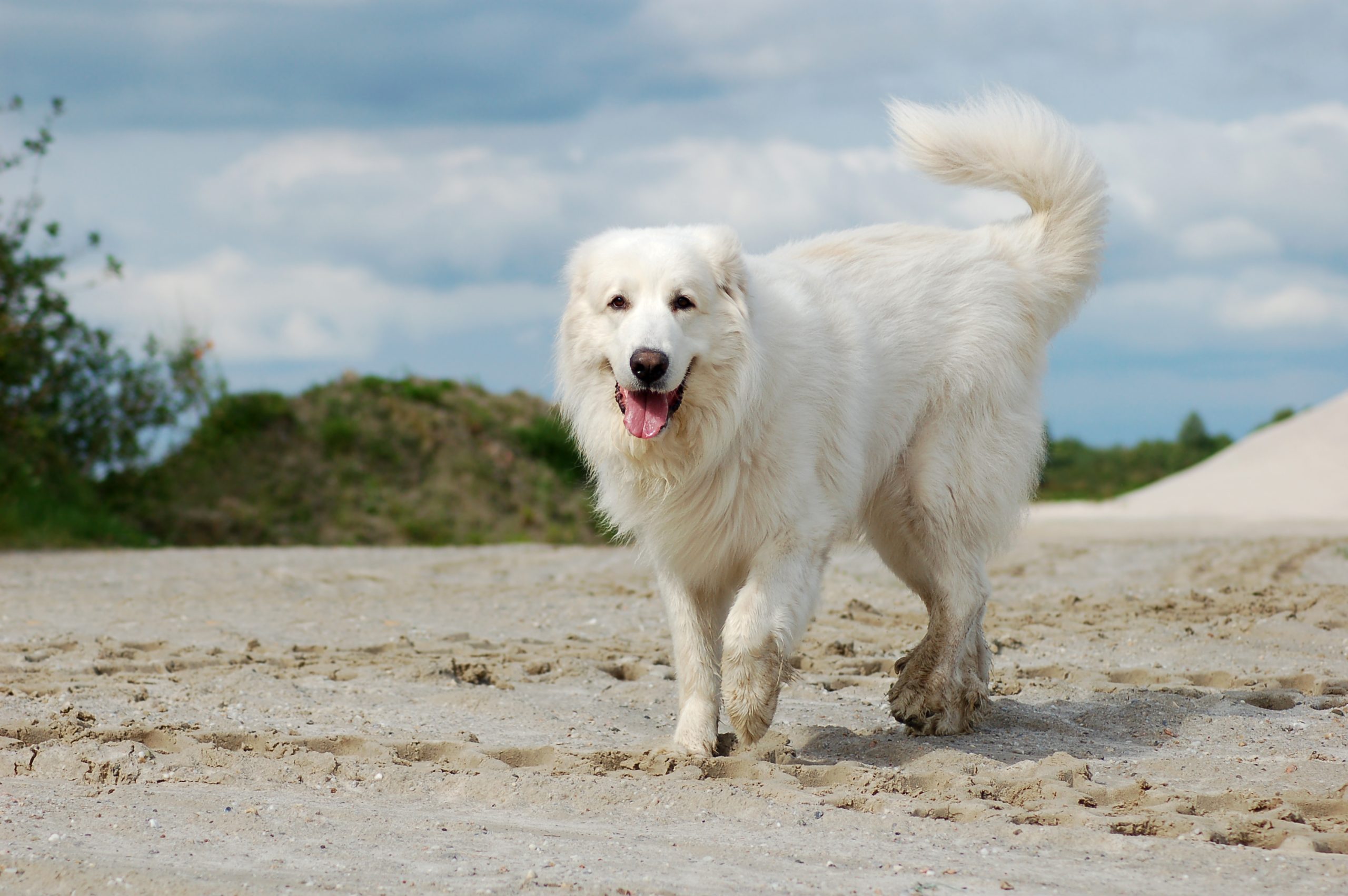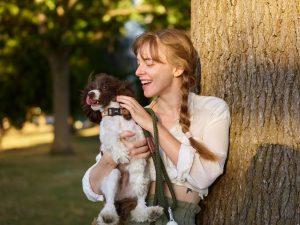Many dog owners love how active and enthusiastic their dogs are. While it’s certainly a joy to be able to run and play with your pooch all day long, not everyone has that kind of lifestyle. For those with a more laid-back approach to life, they may want a dog that fits well into their daily routine and easy to follow pup checklist.
The selection of a new dog is a decision that extends beyond just the breed’s appearance to encompass its energy level and temperament. For individuals or families seeking a pet that aligns with a lower-energy lifestyle, understanding the nuances of the best low energy dog breeds is crucial.
The 5 Best Low Energy Dog Breeds
-
Basset Hound
Physical Characteristics: The Basset Hound, with its long, drooping ears and sad-looking eyes, presents a distinctive appearance. Their short, stocky legs contrast with a surprisingly long and heavy body, making them quite a unique sight. Their coat is typically short and smooth, requiring minimal grooming.
Temperament and Energy Levels: Basset Hounds are the epitome of a laid-back dog breed. They are known for their gentle, patient, and sometimes stubborn nature. While they enjoy leisurely walks and sniffing around, they are not a breed that demands extensive physical activity. Their calm demeanour makes them excellent companions for more sedentary households.
Care Needs: Despite their low energy levels, Basset Hounds do require regular, moderate exercise to prevent obesity, a common issue in the breed. Their ears need regular cleaning to avoid infections, and their short coat requires basic grooming. They are known to be quite vocal, so potential owners should be prepared for a dog that communicates often through barking and howling.
Owner Experiences: Many Basset Hound owners appreciate their dog’s relaxed nature, often noting that they are content to lounge around the house. However, they also caution that their stubbornness can sometimes pose a challenge in training.
-
Bulldog
Physical Characteristics: Bulldogs are immediately recognizable by their muscular build, wrinkled face, and pushed-in nose. They possess a low-slung body with broad shoulders, giving them a sturdy and compact appearance. Their skin is often loose and saggy, particularly around the face, creating their signature look.
Temperament and Energy Levels: Bulldogs are known for being affectionate and loyal, often forming strong bonds with their families. They tend to be quite laid-back, enjoying short walks but equally content with lounging around the home. Their relaxed nature makes them well-suited to less active lifestyles, though they do have a stubborn streak that can emerge during training.
Care Needs: Their unique physical structure requires special attention, particularly in terms of respiratory health, as Bulldogs are prone to breathing difficulties. Their wrinkles need regular cleaning to prevent infections, and they can be prone to overheating due to their brachycephalic (flat-faced) nature.
Exercise should be moderate to maintain their health without overexertion.
Owner Experiences: Bulldog owners often remark on their pet’s loving and easygoing nature. They are typically great with children and make loyal family members. However, their health needs, particularly concerning their respiratory system and skin, require diligent care.
-
Chow Chow
Physical Characteristics: The Chow Chow is a distinctive breed with a lion-like mane of thick fur around their head and shoulders. They have a sturdy build and a distinctive blue-black tongue. Their coat can be either rough or smooth and comes in various colours, requiring regular grooming.
Temperament and Energy Levels: Chow Chows are known for their dignified and aloof nature. They tend to be independent and may not seek out affection as openly as other breeds. While they can be loyal to their families, they are often wary of strangers.
They do not require extensive exercise and are relatively low-energy, content with daily walks and quiet time at home.
Care Needs: Their thick coat requires regular grooming to prevent matting and to maintain its condition. Chow Chows can be prone to certain health issues, such as hip dysplasia and eye problems, so regular veterinary check-ups are important.
Their independent nature can make training a challenge, requiring patience and consistency.
Owner Experiences: Owners of Chow Chows often speak of their strong personality and loyalty. They appreciate the breed’s independence but also note the importance of early socialisation and training to ensure a well-adjusted pet.
-
Shih Tzu
Physical Characteristics: The Shih Tzu is a small but sturdy dog with a distinctively beautiful coat that can grow long and silky. They have a short, square muzzle and large, dark eyes that give them an expressive face.
Their luxurious coat comes in many colours and often requires regular grooming.
Temperament and Energy Levels: Shih Tzus are known for their affectionate and friendly nature. They thrive on human companionship and are generally good with other pets and children.
Despite their small size, they have a lively personality but do not require extensive physical activity. They are content with short walks and playtime, making them suitable for apartment living and less active lifestyles.
Care Needs: Their long coat requires regular grooming to prevent tangles and maintain its health. Shih Tzus are also prone to certain health issues, such as breathing problems due to their short face, and eye issues. They benefit from regular veterinary check-ups and a well-maintained diet to avoid obesity.
Owner Experiences: Owners often describe Shih Tzus as loving and devoted pets who enjoy being close to their human family members. Their small size and adaptable nature make them excellent companions for a variety of living situations.
-
Great Dane
Physical Characteristics: The Great Dane, known for its immense size, is one of the tallest dog breeds. They have a regal, powerful build, yet their expressions often convey gentleness. Despite their size, they are well-proportioned and elegant.
Temperament and Energy Levels: Contrary to their size, Great Danes are often referred to as “gentle giants.” They are typically calm, friendly, and patient, making them great family pets. They do enjoy moderate exercise but are not overly energetic, preferring relaxed environments.
Care Needs: Due to their size, Great Danes require sufficient space to move comfortably. They are prone to certain health issues, like hip dysplasia and heart conditions, requiring attention to their diet and regular veterinary check-ups. Their short coat is relatively low-maintenance in terms of grooming.
Owner Experiences: Owners often emphasise the loving nature of Great Danes and their surprising adaptability to various living situations, despite their size. They are known for being great with children and other pets, but their size and strength require proper training and socialisation from a young age.
Conclusion
Choosing a dog breed that aligns with one’s lifestyle is essential for the well-being of both the pet and the owner. The five breeds here offer unique qualities that make them appealing as low-energy companions.
Each breed requires a specific approach to care and management, and potential owners should be prepared for the unique challenges and rewards that come with these breeds. By understanding the needs and characteristics of these less active dogs, individuals can make informed decisions, ensuring a harmonious and fulfilling relationship with their canine companion.


